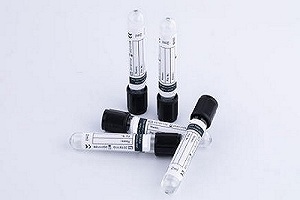Serum is a pale yellow transparent liquid precipitated by blood coagulation. If the blood is drawn from the blood vessel and put into a test tube without anticoagulant, the coagulation reaction is activated, and the blood coagulates rapidly to form a jelly. The blood clot shrinks, and the pale yellow transparent liquid precipitated around it is serum, which can also be obtained by centrifugation after clotting. During the coagulation process, fibrinogen is converted into fibrin mass, so there is no fibrinogen in serum, which is the biggest difference from plasma. In the coagulation reaction, platelets release many substances, and various coagulation factors have also changed. These components remain in the serum and continue to change, such as prothrombin into thrombin, and gradually decrease or disappear with the storage time of serum. These are also different from plasma. However, a large number of substances that do not participate in the coagulation reaction are basically the same as plasma. In order to avoid the interference of anticoagulants, the analysis of many chemical components in blood uses serum as a sample.
The basic components of serum
[serum protein] total protein, albumin, globulin, TTT, ZTT.
[Organic salt] Creatinine, blood urea nitrogen, uric acid, creatinine and purification value.
[Glycosides] Blood sugar, Glycohemoglobin.
[Lipid] Cholesterol, triglyceride, beta-lipoprotein, HDL cholesterol.
[Serum enzymes] GOT, GPT, γ-GTP, LDH (lactate dehydratase), amylase, alkaline carbonase, acid carbonase, cholesterase, aldolase.
[Pigment] Bilirubin, ICG, BSP.
[Electrolyte] Sodium (Na), Potassium (K), Calcium (Ca), Chlorine (Cl).
[Hormones] Thyroid hormones, thyroid stimulating hormones.

The main function of serum
Provide basic nutrients: amino acids, vitamins, inorganic substances, lipid substances, nucleic acid derivatives, etc., which are necessary substances for cell growth.
Provide hormones and various growth factors: insulin, adrenal cortex hormones (hydrocortisone, dexamethasone), steroid hormones (estradiol, testosterone, progesterone), etc. Growth factors such as fibroblast growth factor, epidermal growth factor, platelet growth factor, etc.
Provide binding protein: The role of binding protein is to carry important low molecular weight substances, such as albumin to carry vitamins, fats, and hormones, and transferrin to carry iron. Binding proteins play important roles in cellular metabolism.
Provides contact-promoting and elongating factors to protect cell adhesion from mechanical damage.
It has some protective effect on the cells in culture: some cells, such as endothelial cells and myeloid cells, can release protease, and the serum contains anti-protease components, which play a neutralizing role. This effect was discovered by accident, and now serum is used purposefully to stop trypsin digestion. Because trypsin has been widely used for the digestion and passage of adherent cells. Serum proteins contribute to the viscosity of serum, which can protect cells from mechanical damage, especially during agitation in suspension cultures, where viscosity plays an important role. Serum also contains some trace elements and ions, which play an important role in metabolic detoxification, such as seo3, selenium, etc.
Post time: Mar-14-2022





